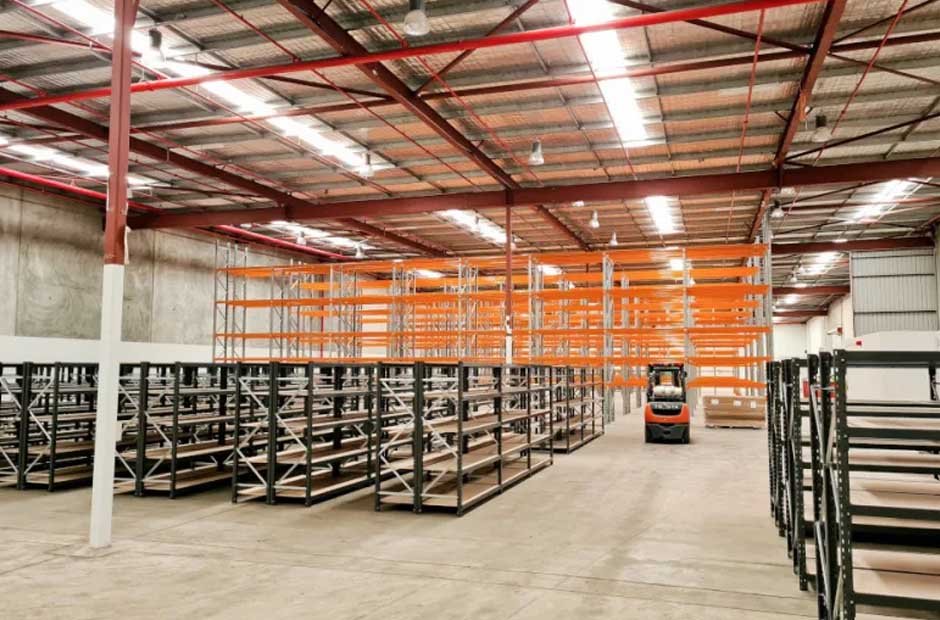In the realm of industry and manufacturing, maintaining an organized and streamlined workspace is vital for productivity and overall success. Given the multitude of tools, equipment, and materials that necessitate proper storage, it becomes imperative to implement industrial storage solutions. Within this guide, we will delve into storage options whilst offering advice on optimizing your industrial space.
1. Evaluate Your Space
Prior to delving into industrial storage solutions systems, it is crucial to assess your workspace by identifying your requirements. Take a walk-through of your area, evaluating factors such as size, layout, and existing storage provisions. Consider both the type and quantity of items that require storage as any unique needs or constraints.
2. Harness Vertical Space with Shelving
Shelving stands out as one of the prevalent industrial storage solutions within industrial spaces. By making use of space, industrial shelving enables the effective organization of tools, equipment, and materials. An array of shelving options exists, including shelving designed for items with easy access to individual pieces; alternatively, mobile shelving can be mounted on tracks, facilitating horizontal movement for accessing specific shelves.
This option can be particularly helpful in situations where there is space. Pallet racking is specifically designed to store heavy items, such as pallets of materials. It offers a storage solution with capacity and can be tailored to meet your specific requirements.
3. Take into account the advantages of cabinets and drawers
Apart from shelving, cabinets and drawers are storage solutions for spaces. Cabinets provide enclosed storage space. They are perfect for protecting tools and equipment from dust or damage. They come in sizes. It can be customized with different configurations of shelves or drawers.
On the other hand, drawers are excellent for organizing parts or tools. They can be integrated into workbenches and used as storage units. By using dividers and separators, drawers can be efficiently organized, making it easy to access items and manage inventory.
4. Invest in robust storage solutions
environments require storage solutions that can withstand loads and harsh conditions. When selecting storage options, choose materials that are heavy-duty enough to meet the demands of your industry. Steel shelving, metal cabinets, and durable plastic bins are all choices.
To ensure the safety of your employees while preventing accidents, it’s crucial to invest in stable storage solutions.
To enhance stability, it is advisable to attach shelving units to the floor or wall, particularly when dealing with tall items.
5. Ensure identification by labeling everything
In a setting, it can become quite challenging to keep track of the storage location for each tool or component. Proper labeling plays a role in facilitating identification and swift retrieval. To ensure that each item has its designated place, utilize visible labels on shelves, cabinets, drawers and bins. Employing color coding techniques can be especially effective in categorizing items or indicating zones within your workspace.
6. Establish an organized inventory management system
inventory management goes hand in hand with maintaining an organized industrial space. Keep a watch on your stock by implementing an inventory management system that aligns with your requirements. This system could range from a spreadsheet to an elaborate barcode system, depending on your needs. The key objective is to have a system in place that tracks outgoing items accurately while ensuring timely reordering of supplies when needed.
7. Maximize space utilization with mezzanines and overhead storage
If you’re facing floor space constraints, considering the utilization of mezzanines and overhead storage solutions would be wise. Mezzanines are elevated platforms that create room above existing ground-level areas, which can be effectively employed for storage purposes or as workspaces.
Overhead storage systems like shelves or racks mounted on the ceiling are great for storing rarely used items. By utilizing space, you can maximize the storage capacity of your industrial area.
Conclusion
In conclusion, industrial storage solutions are essential for maintaining an efficient workspace. By evaluating your space, making use of storage options, investing in durable storage solutions, labeling everything appropriately, implementing inventory management practices, and optimizing space with mezzanines and overhead storage systems, you can create a well-organized industrial area that improves productivity and streamline operations.
Remember that organizing your space is a process. It’s important to review and reassess your storage solutions to ensure they continue to meet your needs and adapt to any changes in your industry. With planning and the right storage strategies in place, you can transform your space into a highly efficient environment.
















